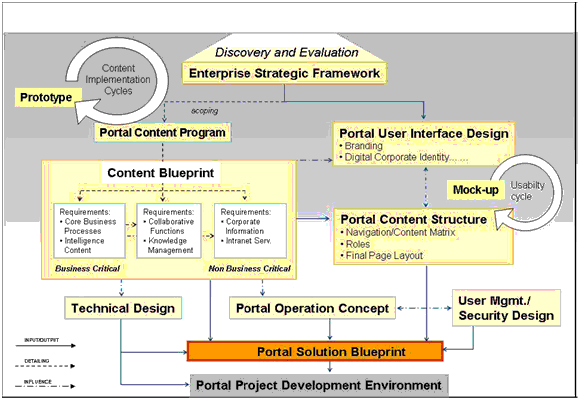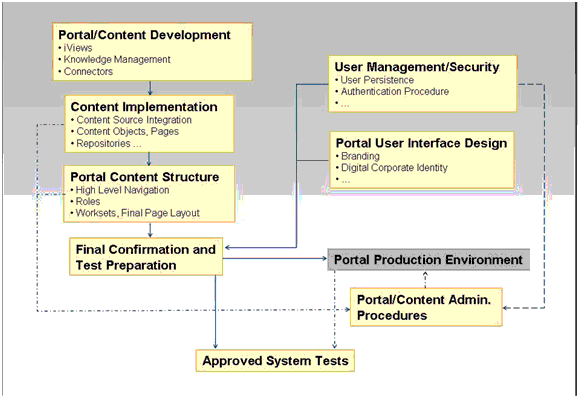What is ASAP Methodology?
Accelerated SAP (ASAP) is an approach specifically developed by SAP to help customers implement the SAP software as quickly and efficiently as possible in. ASAP provides content, tools and expertise from thousands of successful implementations, which can be reused to ensure a successful implementation. ASAP toolset comprises of the following powerful tools which can be used for successful planning and implementation
• SAP Solution Composer: SAP Solution composer can be used to map the customer’s business requirements to SAP solutions.
• SAP Road Maps: SAP offers a pre defined set of road maps for various implementations (spanning across a variety of technologies), which can be used readily for any specific project
• SAP Solution Manager: SAP Solution Manager can be used for efficient solution design, documentation, and configuration and testing purposes.
The Accelerated SAP Roadmap consists of the following phases. The activities to be carried out in each of these phases will change according to the nature of the implementation and the choice of technology.
• Project Preparation
• Business Blueprint
• Realization
• Final Preparation
• Go-Live & Support
Fig 1 Various Phases for ASAP
Why ASAP?
Outlined below are some of the benefits of using ASAP methodology
• Limits the time between implementation and production start-up to a minimum.
• Makes optimum use of the resources of both SAP and the customer.
• Guarantees quality and knowledge transfer during the implementation process.
• Provides the customer with a reusable model that can be deployed for any subsequent SAP implementations, for example in other subsidiaries of the customer, or when adding to the number of existing SAP applications or adjusting to changing needs.
ASAP For Portal – Phases Illustrated
Project Preparation
During this phase all the necessary preparations are made, which include setting up a plan of approach, finalizing the project organization, formulating a detailed project plan, and initiate the training program for the project team members (preferably before kick off), mapping the system landscape, the required hardware and infrastructure, preparing the project area and setting out work agreements and standards for the project. The project officially starts with a kick-off-meeting. All project members, but also other key figures within the company are present at this kick-off meeting. The project and the plan of approach are presented during this meeting.
Business Blueprint
A key objective of the Business Blueprint is to gain an insight into the customer’s business objectives and to determine which SAP business processes and components are necessary to support these objectives. The outcome of this phase is the business blueprint, which is detailed documentation of the results gathered during requirements workshops. Furthermore, the business blueprint documents the business process requirements for the customer. With this, customer can better understand how the company intends to run its business within the SAP software system.
A preliminary meeting is held to discuss business objectives, organizational structure and global business processes. The various business processes are discussed in more detail and recorded in individual workshops. The customer must officially approve the Business Blueprint. This document serves as a basis for system configuration and acceptance throughout the rest of the project. During this phase the development system is implemented and made ready for use.
Fig 2: Project Preparation and Business Blueprint Phases
Realization
During this phase the project teams are busy with various activities.
SAP consultants work on the baseline configuration of the system based on the Business Blueprint. The system configuration reflects the organization of Customer, and contains master data and supports a fully integrated process flow through the system.
By presenting the business processes to project team members as well as other key users of each business process it is possible to get feedback on and sound out the applicability of the Business Blueprint (Baseline Confirmation).
For this purpose the configuration of each core business process is divided into cycles of interrelated business process flows. These flows are configured in conjunction with the development of reports, user procedures, test scenarios and authorization profiles.
The cycles will not only serve as milestones for the project team, they will also provide the project team with checkpoints to test and run through specific parts of the whole business process (Final configuration).
During the cycles, Key Users will define specific business scenarios and conditions for user acceptance testing. This working method ensures maximum knowledge transfer, as Key Users can review the configuration of the core business processes while tailoring their tests scripts to meet specific business scenarios.
Next, the configuration is further developed into an integrated and documented solution that meets the business and process requirements recorded in the Business Blueprint.
Finally, the integral operation of the system is tested in two test cycles. The first cycle tests the interfaces between the integral business scenarios. During the second cycle Customer’s Key Users will carry out the User Acceptance Test, which simulates actual live conditions as closely as possible. This is also the official acceptance of the system by the customer. The system configuration is now frozen (Integration test).
Final Preparation (Preparation for Production Use)
The primary objectives of this phase are to run a final technical system test, to provide end-user training, to migrate data and system to a production environment. The final system tests consist of carrying out volume and stress tests and testing the peripheral equipment and system administration procedures.
Key users will be trained, who in turn have to train end users according to the “train-the-trainer” concept. End-user acceptance is increased and a knowledge base is created for end users on how to deal with online reporting and future system enhancements.
Another objective of this phase is to work out a Go-Live strategy. This plan details the strategy for data conversion, data conversion audit procedures and a project team support structure.
The final step before turning the ignition key on the new System is to check whether the system and the user organization are ready to Go Live.
Fig 3: Realization and Final Preparation
Go-Live & Support
Directly after production start-up, the system must be checked again and fine-tuned where necessary to guarantee that all facets of the business environment are represented in the system. For this purpose it is not only necessary to check the accuracy of the business transactions, but also to check with end users whether the system meets requirements.
During this phase the project team supports the organization and there is an operational helpdesk to which users can report their problems.
During the final step the system is transferred to the management organization and the project is formally closed.
The full strength and flexibility of the SAP system becomes apparent through continuous support for continuous process improvements. In this way it is possible to increase system deployment within Customer, to continuously improve access to the data required for decision making, and control the use of additional functions.
ASAP For Portal –Milestones
Each phase in the ASAP defines major achievements (popularly known as Milestones), which can be used to evaluate the successful completion of each phase. These Milestones are listed below in the table given below
| # | Milestone | Phase |
| 1 | High Level Business Requirements completed | Project Preparation |
| 2 | Business Blueprint completed | Business Blueprint |
| 3 | Core Business Processes implemented | Realization |
| 4 | Implementation tested | Realization |
| 4 | Project Implementation completed | Final Preparation |
| 5 | Start of Production | Final Preparation |
| 6 | Handover Completed | Go Live and Support |
Fig 4: Deliverables – Check List
What next?
This article was mainly intended to make readers aware of ASAP methodology for Enterprise portal. It has been kept simple enough by eliminating the complex steps which needs to be performed in each phase for any successful implementation. Once the flavour of ASAP methodology is attained, the entire road map can be downloaded from Service Market Place and can proceed with the implementation of the methodology, by following the documentation which is provided as a part of the road map.

























 229
229











 被折叠的 条评论
为什么被折叠?
被折叠的 条评论
为什么被折叠?








